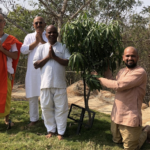Just when relations between India and Pakistan were on the verge of normalcy, something untoward happened that suspended the gains of the last few years, at least momentarily. A disturbing thought, it brings with it a sense of dj vu. This is how the relations between the two distant neighbours have progressed over the years; one step forward, two steps back.
Fortunately, even if in an inverted way, the domestic political compulsions in both countries infused some sense among the leaders, soldiers, diplomats and most importantly the media. The Indian Foreign Minister, Salman Khurshid, has responded positively to the offer of talks made by his Pakistani counterpart Hina Rabbani Khar.
It may well be business as usual soon. It’s just that “business as usual” between these two neighbours does not necessarily mean peace; it merely means staying engaged, and that too with a share of cynicism. So it may take some time to get the Indian side to resume the visa relaxation policy that had just been put into effect; though one hopes the cultural programmes and sports will not be halted and stay “as usual”.
There may be some disruption in free trade as a consequence of Pakistan granting India the MFN status which may have been the context as well as the cause for the current crisis around the LoC. As for the core issues, Kashmir and water from the Pakistani side and cross-border terrorism from the Indian side, the violence along Loc has only brought them into sharp focus.
In today’s Special Report, in order to understand the reality behind the tenuous peace, we have decided to bring in views from both India and Pakistan. These are sane views, on either side, that want to see the two neighbours live peacefully. In order to get a clear picture of history, we have also tried to look at the role of the UN along the Line of Control.








